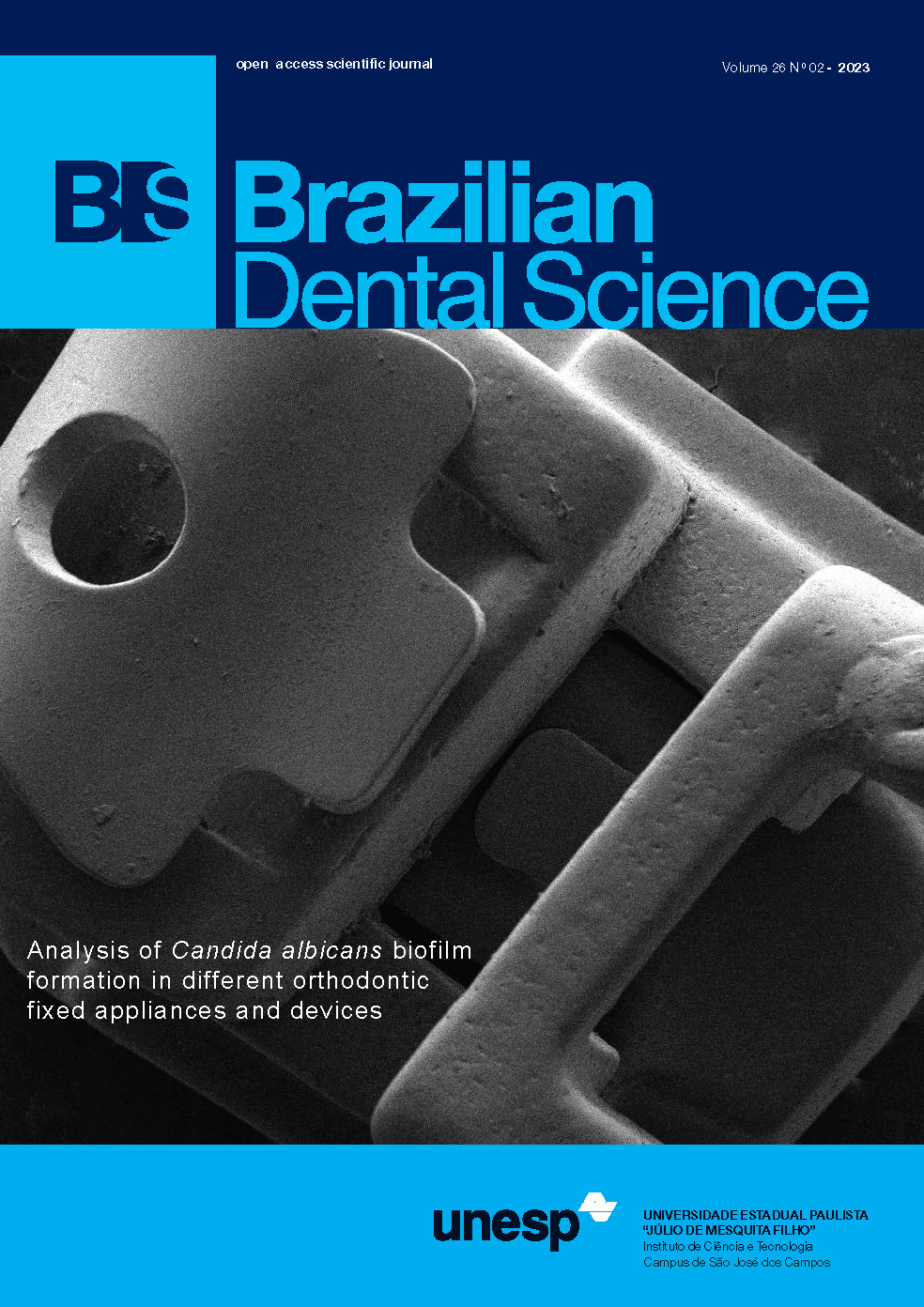Influence of traverse and waveone gold glider glide path files on the amount of apically extruded debris
DOI:
https://doi.org/10.4322/bds.2023.e3769Abstract
Objective: The aim of this study was to evaluate the effect of different glide path files on the amount of apically extruded debris. Material and Methods: Sixty single-canaled mandibular premolars were accessed and randomly divided into three groups (n= 20) according to the file used for glid path creation; group A using Traverse file, group B using WaveOne Gold Glider, group C using stainless steel K file. All teeth were then instrumented using the Reciproc system. The debris extruded apically during instrumentation were collected into pre-weighed Eppendorf tubes which were then stored in an incubator at 70 °C for 5 days. The weight of the dry extruded debris was established by subtracting the pre-instrumentation and post-instrumentation weights of the Eppendorf tubes. The data were analyzed using one-way ANOVA test, and post hoc analysis. Results: WaveOne Gold Glider produced the least amount of apical extruded debris (0.41±0.25) followed by the Traverse group (0.59±0.20) then the K-file group (0.64±0.16) with a statistically significant difference (p=0.003). Conclusion: Apical extrusion of debris is inevitable during root canal cleaning and shaping. Creation of glide path using engine-driven files produces less amount of apically extruded debris compared to hand-driven K-files.
KEYWORDS
Root canal preparation; Nickel titanium alloy; Dental instruments.
Downloads
Published
How to Cite
Issue
Section
License
Brazilian Dental Science uses the Creative Commons (CC-BY 4.0) license, thus preserving the integrity of articles in an open access environment. The journal allows the author to retain publishing rights without restrictions.
=================




























